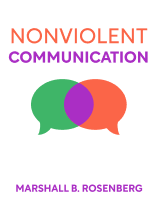

This article is an excerpt from the Shortform book guide to "Nonviolent Communication" by Marshall B. Rosenberg. Shortform has the world's best summaries and analyses of books you should be reading.
Like this article? Sign up for a free trial here .
What does it mean to have compassion for yourself? How does the way you treat and talk to yourself affect your relationships with other people?
The idea of having compassion for yourself may seem like a foreign concept to many people. This is especially true for those who were raised in abusive or unloving homes, where expressing care and kindness was uncommon, if not downright strange.
Read about the importance of cultivating compassion for yourself and how it affects the way you relate to others.
Showing Compassion for Yourself
Many of us tend towards violent communication filled with judgment and criticism when we speak to ourselves, which makes it difficult to relate compassionately to others. Our ability to connect to other people stems from our core humanity and the belief that there is some spark of good in everyone; when we lose sight of our own inherent worthiness, we risk extinguishing that spark in ourselves.
Healing those internal wounds is especially difficult because cultural programming actively discourages talking about feelings and needs. The imperialist roots of the English language play a role as well—we use “needy” as an insult and view anyone who says “I need” or “I feel” as selfish or immature. Over time, we internalize those judgments and learn to distance ourselves from our own needs as much as possible.
Practicing Self-Compassion
Making mistakes is part of being human, but many of us chronically punish ourselves for not being perfect. Over time, that critical self-talk can evolve into debilitating shame that prevents us from showing up authentically for others. Shame is an unproductive emotion that blocks our ability to learn and grow from our mistakes.
It’s true that guilt and shame can sometimes motivate us to change our behavior. We may even see it as simply “tough love.” But even when we have good intentions or are trying to respond more compassionately to other people, shame is a selfish motivation—we do good for others to alleviate our own pain, not out of genuine care for their wellbeing.
Creating an internal dialogue with more compassion for yourself begins with withholding judgment. Self-judgment is easiest to catch when it takes the form of criticism (like “I can’t believe I did that, I’m so stupid!”). The more insidious form of moralistic self-judgment comes in the form of “should”—as in, “I should have known better” or “I really should exercise more.” These statements are demands, not true requests, because we know we’ll punish ourselves severely if we don’t comply.
To express compassion for yourself, treat it just like any other relationship by focusing on feelings and needs. Instead of thinking, “I’m so stupid,” practice thinking, “What unmet need prompted me to act that way?”
Bringing awareness to your unmet needs gives you a healthy, compassionate way to grow from the experience rather than getting mired in self-hatred. Allow yourself to feel all those emotions about what happened without raking yourself over the coals for it.
Rewriting Judgmental Inner Dialogue
Transforming your inner dialogue using NVC is powerful. For example, the author once worked with a deeply depressed woman who was wrestling with her choice to stay at home with her children. At the root of her depression were two judgmental voices: the “career woman,” who told the woman she was wasting her education by not working and that she should be doing more with her life, and the “responsible mother,” who told her she couldn’t possibly handle the responsibility of being a working mother. These voices were a constant source of internal criticism that left the woman feeling miserable and stuck.
As a first step to alleviate that misery, Rosenberg asked the woman to translate the words of those critical voices into the four steps of NVC: observation, identifying feelings, identifying needs, and making requests. The simplest way to do this is to phrase the issue as, “When a happens, I feel b because I need c. Therefore, I would like d.” See how you can rewrite those critical voices using this formula:
| Critical Self-Talk | NVC Statement |
| I’m wasting my education. I should do more with my life. | When I spend this much time at home, I feel depressed because I need professional fulfillment. Therefore, I would like to get a part-time job. |
| I can’t handle the responsibility of being a working parent. | When I think about going back to work, I feel scared and overwhelmed because I need to know my kids are still being taken care of. Therefore, I would like to find quality child care options. |
Rephrasing those inner judgments in the language of NVC takes the focus off blame and criticism by acknowledging the reality of the situation, examining feelings and needs nonjudgmentally, and using those observations to make a plan. Empathizing with your needs and feelings helps you naturally move toward a solution instead of staying stuck in a cycle of self-judgment.
You can also use this technique when those inner voices direct their criticism at other people. If someone cuts you off in traffic, you might instinctively react with anger and blame—which, over time, takes a toll on your physical and mental health. Instead of blaming others for those feelings, try showing yourself empathy: “I’m feeling terrified because we almost crashed just now. I wish people would drive more cautiously because I need to feel safe.” Empathy can act as a pressure release and defuse the stress of the situation.
Make Choices That Contribute to Self-Compassion
The way you speak to yourself is only one part of showing compassion for yourself. Another important part is your external reality—the choices you make about how to spend your time. Rosenberg’s advice is, “Don’t do anything that isn’t play!” In other words, your choices should be motivated by joy and compassion for yourself rather than duty, shame, or obligation.
That doesn’t mean you should quit your job and move to a tropical island somewhere—it’s about transforming your relationship with the way you spend your energy.
Language creates and reinforces the way we think about our everyday lives. When you say you “have to” do something, it immediately becomes a chore; in contrast, if you “choose to” do something, you acknowledge that you are responsible for the way you spend your energy. Transforming “have to” into “choose to” is a powerful, practical tool for practicing self-compassion and turning obligation into play.
Connecting Choices to Needs and Values
Again, turning “have tos” into “choose tos” may seem impossible because some things seem like true obligations—we can’t just choose not to eat or not to go to work. But “choosing to” do something doesn’t imply that you could simply “choose not to” do it without consequences—it means connecting that choice to the needs and values underlying it. We make active choices about even the most basic activities: We choose to eat because we value staying alive and healthy; we choose to go to work because we value having a place to live (which costs money). Evaluating the needs and values behind the choices we dread gives us an opportunity to either change the situation or change our mindset.
Notice that the need behind the choice to go to work isn’t “to make money.” Money, itself, is not a “need”—it’s a strategy for meeting a much more fundamental need. If you have no other strategies to meet that need, taking responsibility for your choice to go work (rather than miss rent) can at least help you feel less helpless in the situation. If you do have other strategies for meeting that need for a place to live, becoming aware of the motivations behind your choice to work might prompt you to meet that need in a different way.
Take a moment to think about the things you do regularly that feel like “have tos.” For some of them, identifying the underlying need or value might help you reframe the act as play. For example, maybe you dread having to drive your kids to school, but you realize that you choose to do that because you value quality time with them. That naturally shifts your mindset to one of self-compassion and gratitude for having the chance to spend that time together.
On the other hand, some of the needs and values underlying your choices may be less joyful, like the need to gain approval, escape punishment, avoid shame and guilt, or fulfill a sense of duty. If you discover one of these motivations, you have the same two options: Change the situation or change your mindset.
For example, if you realize you hate putting on makeup and only do it to gain others’ approval, you might decide to start practicing self-compassion to change that habit. On the other hand, if you realize you only pay taxes to avoid punishment, you could choose to change your mindset by focusing instead on the essential services your money supports (like hospitals, schools, and roads) and all the people that might benefit from them.

———End of Preview———
Like what you just read? Read the rest of the world's best book summary and analysis of Marshall B. Rosenberg's "Nonviolent Communication" at Shortform .
Here's what you'll find in our full Nonviolent Communication summary :
- How nonviolent communication lets you have more compassion for yourself
- Why nonviolent communication is the key to fostering authentic connections with others
- The 4 steps to expressing yourself with empathy towards others






